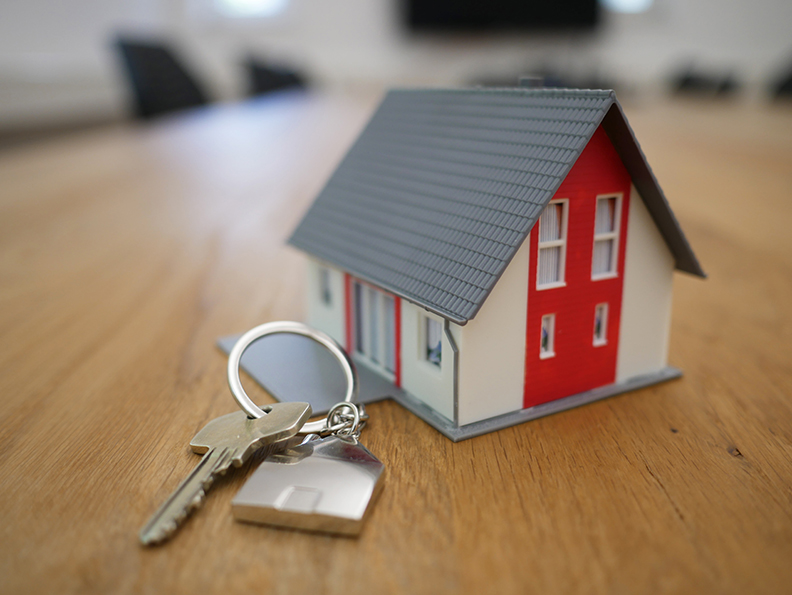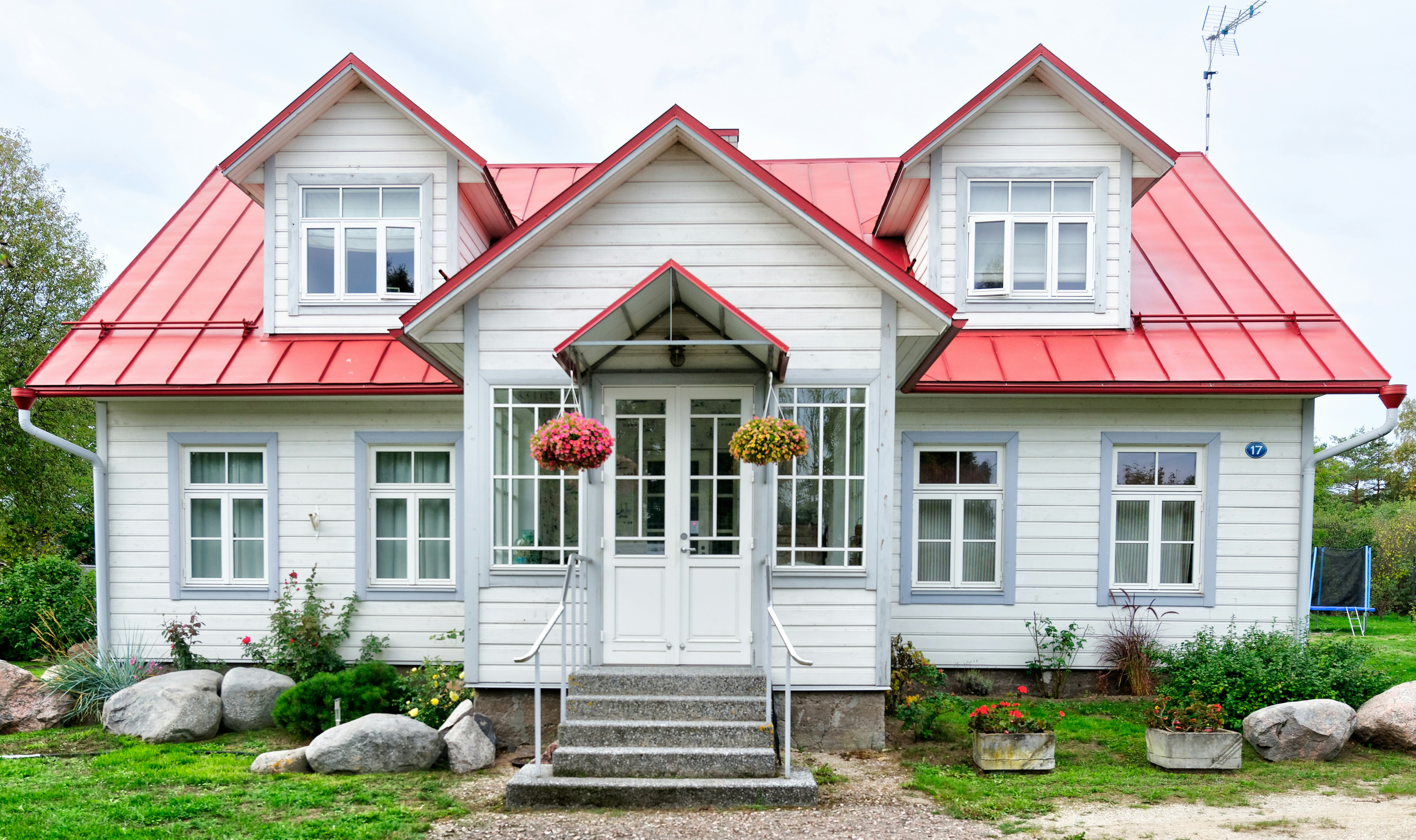Tough, Durable, and Secure: Which Large Safe Is Right for Your Home?
Link Copied
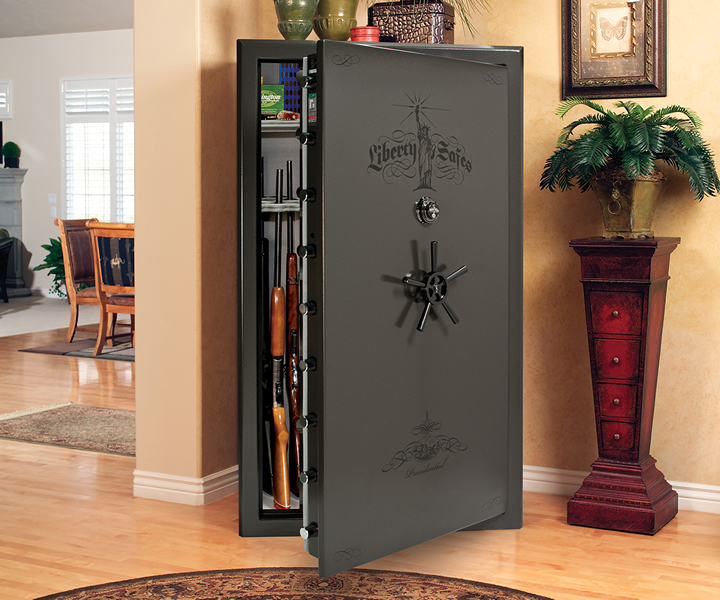
Ratified in 1776, the Declaration of Independence declared three inalienable rights: the right to life, liberty, and the pursuit of happiness. While the wise know that happiness does not come from possessions alone, the protection of life and liberty are a responsibility we hold dear to ourselves, our families, and our fellow man in addition to our right to property. Guarding these things we can effectively deter criminals from taking away these freedoms.
The modern safe is a receptacle in which almost anything can be stored, from important documents, heirlooms, firearms, and ammunition. The largest size of safe can hold all of these with room to spare, protected by a thickened steel plate, insulation, and locks designed to store everything you require. Protection from theft is only one positive feature: knowing everything needed for the pursuit of your own path to happiness is contained in a single well-built lockbox will give you peace of mind, especially in these times of uncertainty and doubt.
The safe has always been a symbol of impenetrable defense. As the technology behind the steel walls and doors continues to develop, their ability to guard your most valuable arms and belongings will go beyond protection from burglars and thieves. Fireproof and water resistant safes are almost as valuable as the items they hold, as even terrible disasters befall your home or your business, a spacious, high-grade safe will remain steadfast beneath the rubble and rain. But just because a safe looks strong does not mean it will do the job it is meant to perform. Here is some information for you to consider before making this important purchase.
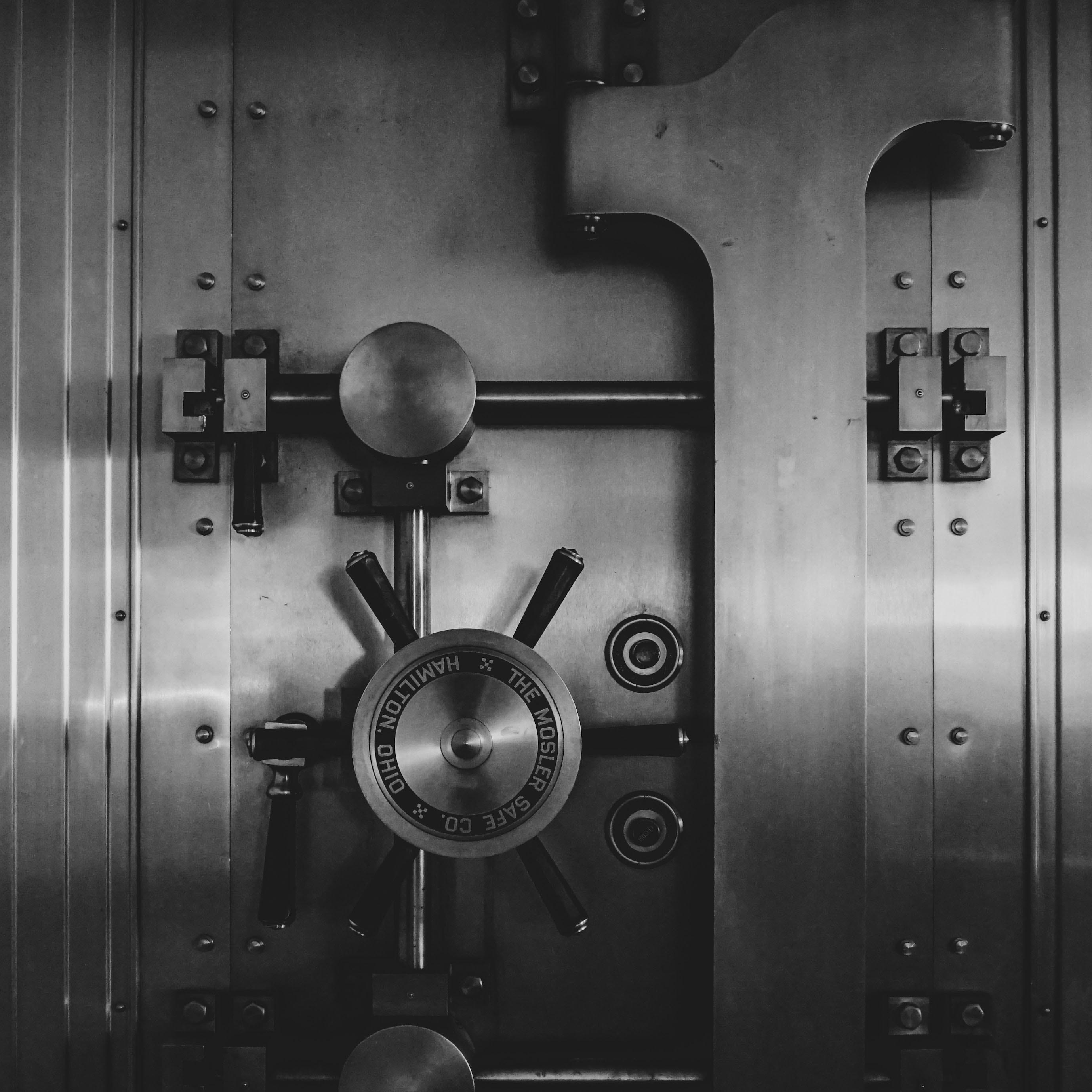
Modern History of the Safe
Theft has been part of the human condition only a bit longer than the desire to keep belongings protected from it. The peoples of ancient civilizations kept wealth well-protected; in some cases, they desired riches to go with them into the afterlife, protecting them with tombs, pyramids, and temples. Who can resist the allure of a treasure hunt? Unfortunately, there is a reason discoveries like the tomb of Tutankhamen are so rare: in the hands of thieves, the thoughts of holding gold and silver and spending every ounce immediately outweighs the desire to protect it for future generations.
The earliest types of safes were usually made of hardwood and wrapped in metal, featuring simple locks: these were typically for decorative purposes only. Iron safes with large locks and keys represented the highest form of protection, but offered no water or heat resistance, making them particularly vulnerable to disasters both man-made and natural. The forged metal safe and secure vault came into their own at the turn of the nineteenth century, a time when the romantic idea of the bank robber and the train heist bandit originated. With gunpowder or lockpicks to blow the lock, or crowbars to pry weak hinges open, these relatively simple safes could be broken open with a little know-how, and if they couldn’t break the security safe on site, they could always haul it away and take all the time they needed. Burglars got very good at doing just that, and this has not changed today. By 1830, the idea of a fireproof safe was patented by a number of people in both the United States and England. Many types of fire retardant material was used (from wood and clay to safes-within-safes surrounded by a chamber of air), but none of them worked particularly well, as the inside of a metallic safe under enough heat will cook everything inside like an oven.
Engineers developed technology to stop burglars and thieves. Large lock bolts prevented the effectiveness of crowbars. Geared bolts that secured all four sides of a safe door became a standard in bank vaults. And forged steel safes lined with concrete on the interior became the first truly useful fire-retardant lockboxes. These early designs have been expanded, especially in the designs of vaults that are specifically designed not to move. Large safes share this trait in common; while they are built to be installed fully assembled, their weight protects the whole security safe from theft and sturdy construction helps the safe withstand tools like a heavy-duty drill, crowbars, wedges, and even explosives from penetrating their thick steel construction.
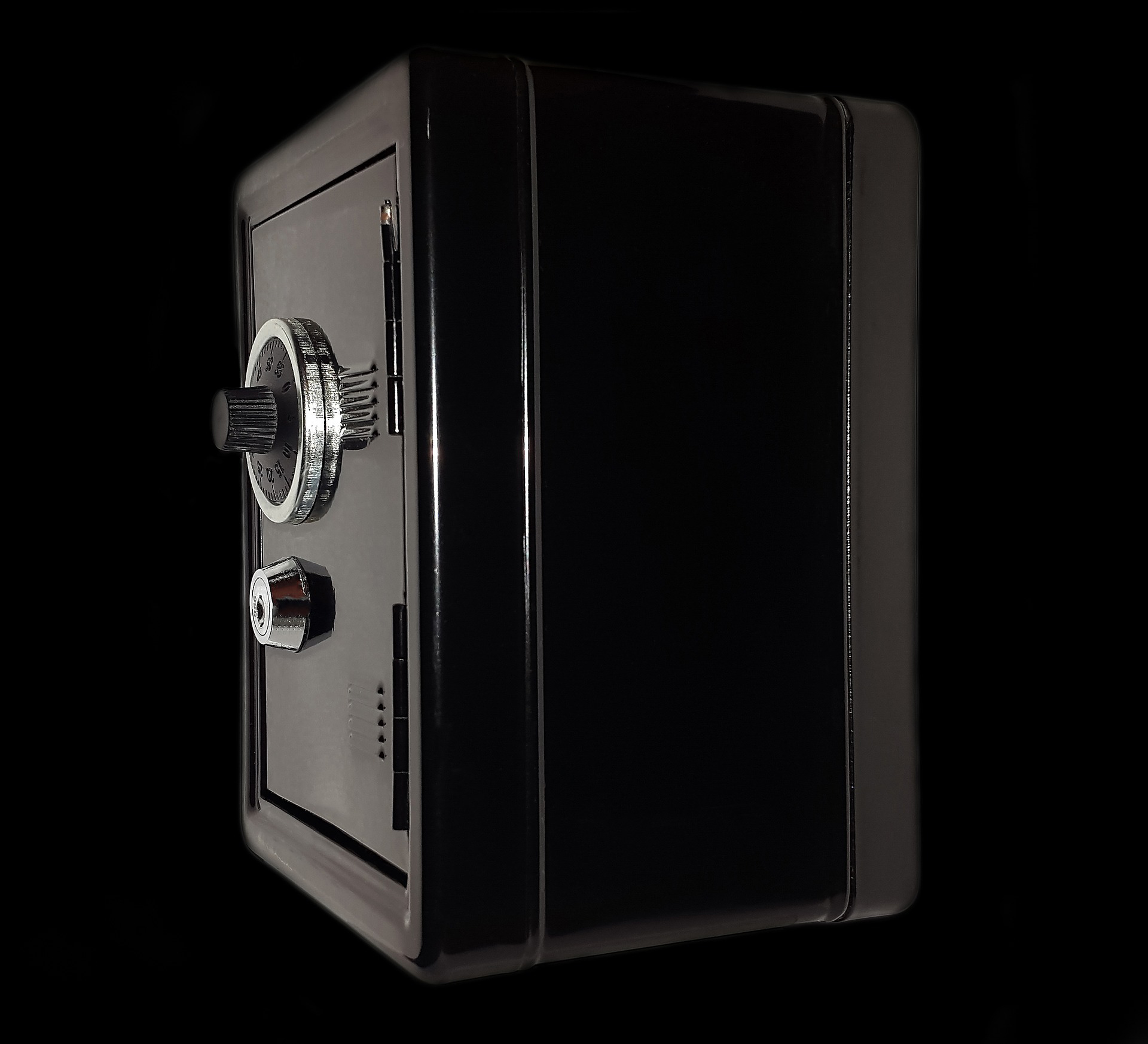
The Many Uses of a Safe
The first question you should ask before purchasing a safe is: “What do I have that needs steel plate protection?” After all, large safes come with price tags that are just as hefty as the safes themselves. A safe is only as good as its use. Small safes and lockboxes may be good for small items like jewelry, but as you can imagine, if a burglar can find it and haul it away, the safe was worth less than nothing. Large safes will give you plenty of storage space, but unless you need all the space for large items like rifles or gun collections, it may not be necessary.
With that said, large safes are designed with storage capacity and maximum theft protection in mind. If you intend to set aside everything important in a single central location, buying a safe with sufficient space is a priority you may consider. To give you an idea of the kinds of things you might store inside such a safe, here is a list of items you may have lying unprotected that you would do well to store and guard appropriately.
Protecting Important Documents
Identity theft is no joke. And why should a criminal use the internet to try to fool you when they can simply enter your home and take your documents right out from under you? You may think hiding them is a sufficient way to protect them, but then you may simply forget yourself where you placed them, making life extremely difficult when you really need them. What if the worst happens? Imagine if a fire consumes your home or business along with the valuable paperwork necessary to recover from the loss. Instead of spending grief-filled time trying to navigate creditors and the government to recover them, the right safe solution can protect your documents from all of these threats.
Some of the documents you can store inside a safe include:
-
Birth certificates and social security cards. Even copies of your original birth certificate or social security card can help, though you can request new cards and certificates from your local records office if you need to.
-
Foster or adoption papers. Apart from the great memories, these papers may be necessary if the adoption or foster process is still ongoing.
-
Passports and immigration papers.
-
Living and last wills. Having this in a predetermined location, especially a safe, can make things much easier for your surviving family members to carry out your wishes.
-
Property deeds. These can include title deeds for vehicles, homes, and land.
-
Three years of tax returns. If the IRS returns and performs an audit on your taxes (which they can only do in the previous three years), it is wise to keep these documents handy.
-
Photos and prints. Storing these electronically is always a good idea, but hard drives can fail. Keeping the originals in a dark and dry safe will guarantee they are available to you and your children.

Storing Precious Objects
Just a few of the valuables you can store inside a safe include:
-
Jewelry and precious metals. It is not generally recommended to fill your safe with every last gem or silver coin, however; for the real invaluable treasures, a bank security box is a better avenue for guaranteed protection. In times of emergency, however, it is a good idea to have a valuable commodity that has inherent value.
-
Low-security flash drives and hard drives. Similar to old photographs, storing copies of media can serve as a second or third line of defense for your pictures. Most large safes will have adequate protection against humidity if managed properly But in case of high heat, many digital mediums will be damaged. If your safe has space, storing a smaller media-specific safe will provide the desired preservation. If your photos are invaluable in electronic form, however, storage to a Cloud-based service is recommended.
-
Emergency cash. Similar to precious metals, cash will have value in times of trouble. Also similar is the advice to not fill your safe with hundreds of thousands of dollars; a bank is the government-insured place for such a fortune. Emergency cash should be stored in a plastic bag (or several) to keep it guarded against water and humidity.
-
Spare keys. These can be spare vehicle keys, property keys, or house keys. Of course, it is probably not a good idea to store your spare safe key inside your safe. I want to say this is a joke, but I’m sure someone somewhere has done it accidentally.
Valuables and important documents have some overlap. Photos and film negatives, for instance, are precious for different reasons than jewelry and cash. Choosing the right fireproof safes is key to safeguarding these, which will be covered shortly.
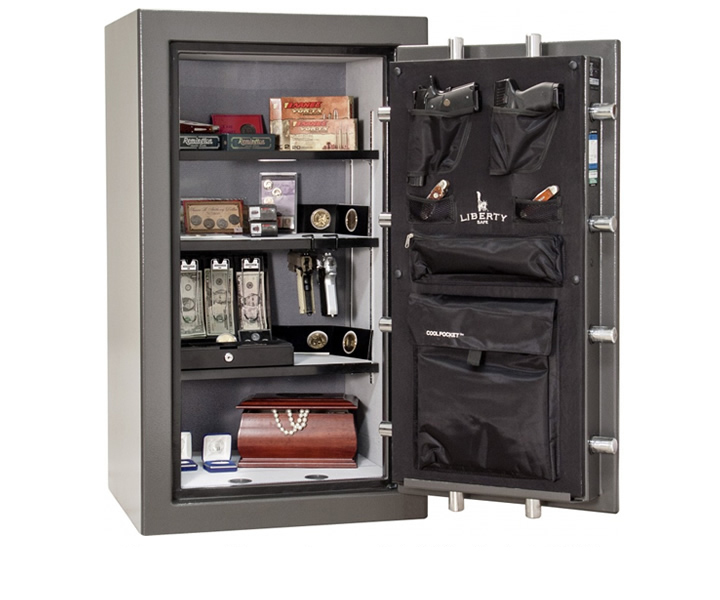
A Gun Safe for Safe Firearm Storage
A primary reason for purchasers of large safes is to store and protect firearms. These safes are perfect for the job, as they can often carry multiple rifles and handguns as well as ammunition and accessories. This can also be accomplished by a gun cabinet if your collection outgrows a single safe. The proper procedures on storing your firearms and ammunition will be covered shortly, but it is worth stating several times that guns must be stored with their safeties on, no attached magazines, and with no ammunition in the chamber. It is also vital to store ammunition separately from the guns, whether in a different safe or in a lockable compartment inside your gun safe. If these guidelines are not followed, tragedy can strike in an instant.
Protection of Belongings In Natural Disasters
No matter where you live, nature takes its course. Through fire, water, wind, and rain, you want the assurance that your most important belongings will be protected. Choosing the right safe for heat and water resistance is very important, especially if you live in a place that you know is prone to intense weather. Understand, however, that no safe is truly waterproof, so a little preparation can go a long way. With large safes, there are a few things you can do to ensure your items are protected:
-
Ensure that your steel safe is up above ground level, either installed on a strong platform or situated on a strong and elevated concrete base.
-
Used waterproof plastic bags for small items and water resistant duffle bags and rifle covers for firearms.
-
Rely on an interior dehumidifier to keep moisture levels down. This accessory requires no power supply. Filled with pellets of desiccant silica, all you need to do is replace the silica once every one to two weeks depending on where you live.
You may imagine your gigantic safe bouncing around your shed or garage during a powerful earthquake! Keep in mind, however, that your safe is specifically designed to take abuse. In case of this disaster, a good idea for the interior is to pad the walls with acoustic foam padding. Acoustic panels typically have a higher flash point than regular foam in case of fire.
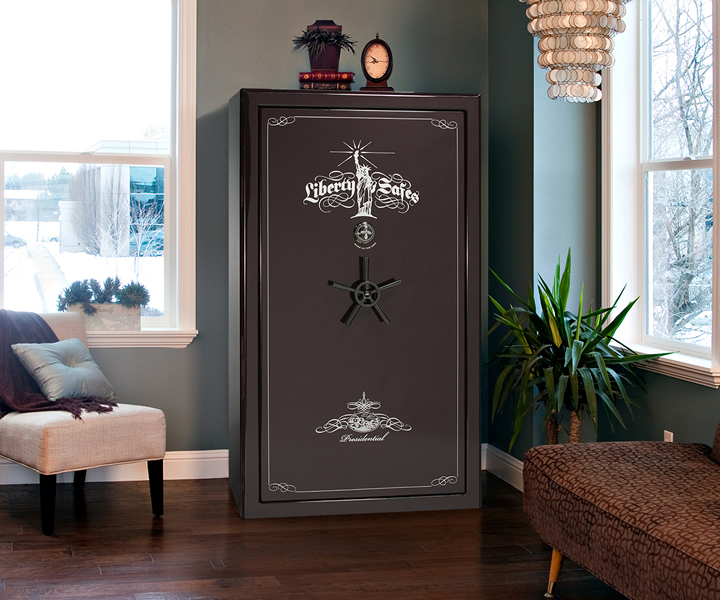
Picking the Best Large Safe For Your Needs
Now that you have decided upon which items you would like to protect inside a safe, it is time to choose the safe. Safes are built according to several specifications that are important for the customer to understand. For example, Cove has partnered with LibertySafe to demonstrate their top-of-the-line theft protection: check out their products at LibertySafe.com, and learn a little bit about the information you will need to make a smart choice.
Choosing the Best Fireproof Safe
Fireproofing has been an issue in the manufacture of safes for many decades. How do you stop a giant steel box from becoming an oven and cooking everything on the inside? Fortunately, modern materials between the steel door and wall instead insulate the contents for a set temperature and for a set amount of time.Thei fire ratings are based on testing performed by UL, or Underwriters Laboratories. Fire ratings for safes are rated depending on their interior temperature: a class 350, one-hour safe is guaranteed not to exceed this temperature after one hour under temperatures typical of intense fires (about 1700 F°).
There are also BTU (or British Thermal Unit) ratings for safes. For context, one BTU is the amount of energy required to raise one pound of water 1° F at sea level. This safe from LibertySafe is rated at 86,000 BTUs and is capable of keeping the interior protected from 1200° F temperatures for 75 minutes.
If you have any questions about fire ratings, do not hesitate to ask for assistance. Getting the fire protection you will need for your safe will protect your investment.
Safes and Water Resistance Specifications
The sad truth is that no safe is truly 100% water resistant. If this were the case, the pressure inside the safe would be different than the pressure without, making opening the door with a delicate electronic lock or combination lock impossible (imagine a cork at the end of a wine bottle; once it is wedged in, it is very difficult to reopen). Almost all safes are built with a “Palusol seal”, a material that expands to keep out heat and smoke at certain temperatures. You might think this would act as a water resistant barrier, but alas, it is not, even in the rare event that your safe is engulfed in boiling water.
So, the solution is simple: Zip Lock bags and Tupperware containers are your best friends. As stated before, wrap up anything in your safe that needs to be kept nice and dry. When installing your safe, ensure it is placed on a firm foundation above the floor; even a few inches will give your room the clearance it needs should a pipe burst or rain leaks in.
Types of Locks and Hinges
Safe technology has not only made safes more tough and secure, they’ve also made them easier to open when you can prove it’s you. The simplest type of locks such as a combination lock or a key lock still exist. But new designs of locks include a biometric lock that registers your fingerprint and opens only with your finger. A digital lock generally runs on battery power, and opens with a simple pin code or password. Most safes offer multiple kinds of locks to ensure the safe can still be opened with a backup, such as a combination or a concealed key lock. If you are worried about the kind of lock is best for your needs, go with what you would feel most comfortable using. Personally, I’ve always been terrible with combination locks. Some people would feel uncomfortable with biometric locks and prefer keys.
The types of steel hinges on modern safes also matter. Typically there are two types: interior and exterior hinges. Exterior hinges are plain to see, rotating on ball bearings and attached to the safe frame. Interior, or concealed hinges, are manufactured on the inside with a hinge also rotating on ball bearings for frictionless rotation. There are benefits to each. Exterior hinges typically open wider and a welded hinge prevents thieves from using a welding torch to pry the door open. Interior hinges ensure that burglars cannot pry or wedge the door open.
The majority of the time, the type of lock and hinge is personal preference. If you require a specific type, contact the manufacturer to see if they have a specific model that would meet your expectations.
Safe Accessories
There’s no use storing precious items inside a safe like you would a high school locker: you need some organization! Fortunately, there are dozens of ways to customize your safe to match the items stored inside. Some of these include:
- Adjustable shelves: These are perfect for organizing smaller belongings like books, ledgers, containers, and lockboxes.
- An Interior security safe box: When you need added defense, a personal secure box if you share a larger safe, or need to keep separate items like ammunition away from firearms, an interior safe can serve this purpose.
- Temperature and humidity monitors: If your belongings require a specific atmosphere (if you keep certain documents, photos, or art, for example), monitoring the interior is essential.
- Dehumidifiers: To help prevent mold and preserve documents in more humid climates, a good dehumidifier will do the trick.
- Pistol racks and rifle rods: Hanging and storing your firearms is easy with these accessories, which can be placed on top of or hung under shelves.
- Door panel pockets and bags: perfect for any small items.
- Battery-powered adhesive lights: great for being able to see inside a safe in the dark!
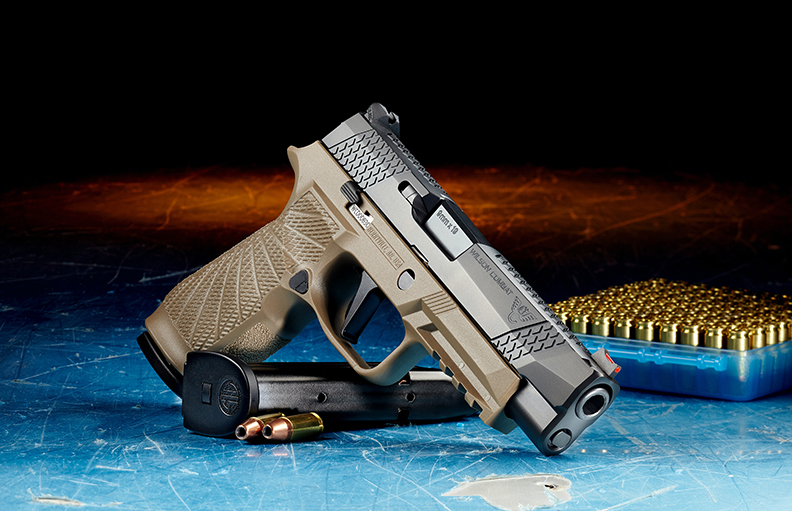
Protecting Yourself and Your Family With Gun Safes and Cabinets
The second amendment is an important facet of American duty: to keep and bear arms, to protect yourself, your family, and your neighbor from injury or harm. Practicing with your firearm should be a regular event, helping you honing your skills on the firing range if the fateful day should ever come that you will need to use it. When you return home, however, it is just as important to stow your firearm properly to avoid accidents that would change your life in an instant. You may have heard the phrase: “Don’t point your gun at anything you aren’t willing to destroy.” An addendum to that phrase might be: “Secure your gun in a way that will protect everything you want to live.”
When looking for a large gun safe, consider the types of firearms you own. While a long gun safe is a good option for a few rifles and handguns, if you own a collection of firearms, a cabinet may be a better option. Both of these will deter theft and keep your firearms secure from those who have no training using them.
Keep Guns Away From Children and the Inexperienced
Losing a loved one — or worse, a child — because of a failure to put away firearms properly is the greatest tragedy that can happen to a gun-owner. Far too often do we hear stories on the news of children who think the gun is a toy only to shoot themselves or other kids. To avoid this, here are guidelines to always follow when returning from your job or the firing range:
-
NEVER place a loaded gun out in the open: if the gun is yours, it is your responsibility.
-
NEVER lock away your gun loaded. This includes clearing the chamber before storage. There are more than enough stories of people getting shot while trying to clean their guns, or shooting themselves in the leg or behind when carrying concealed.
-
NEVER show your children where your gun cabinet or gun safe keys are or what they look like unless you are teaching them the rules of safety..
-
ALWAYS lock your gun with a trigger lock when you do not need it, even if you think it will slow you down in an emergency. In fact, practice moving from locked to fully loaded and back again, just to get the muscle memory.
-
ALWAYS keep your firearms and your ammunition in separate places, or in the very least in separate lockable drawers or safes. Although danger always exists with weapons, your gun and your ammo cannot work without each other.
-
ALWAYS teach your children how to react in the presence of a firearm, namely to avoid them and tell an adult. Studies have shown that children who see guns cannot resist their curiosity to study them.
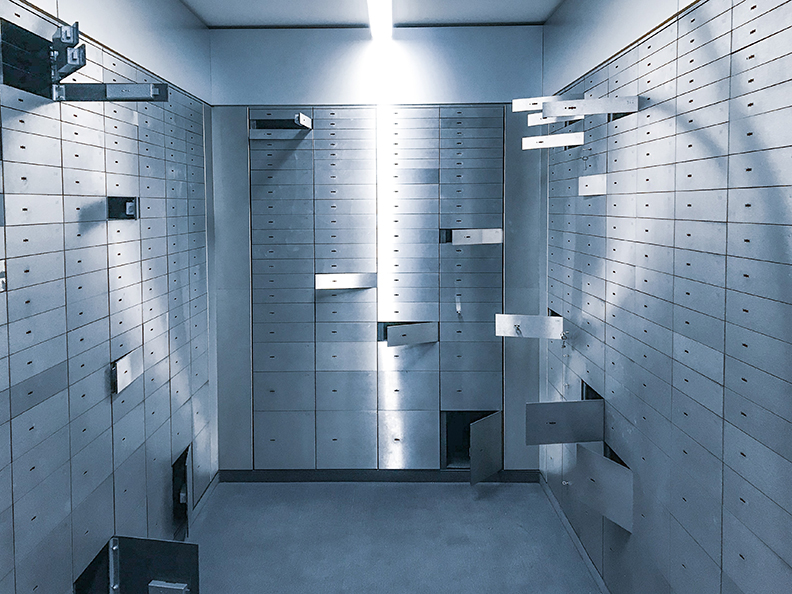
Quick-Access Safes for Instant Personal Protection
Perhaps the one complaint to rigidly following all safety precautions with a firearm is this: what happens when I need my gun in an emergency? One type of gun safe that may appeal to anyone looking to protect themselves at a moment's notice is a concealable quick-access safe. Perhaps the fastest is a biometric safe; with a handgun stored inside, all you need to do is press the biometric sensor with your finger and your firearm is ready in a flash. With the understanding that such a safe will contain both your gun and your ammunition in one place, you will need to weigh the pros and cons when it comes to the protection of your family.
The Guarantee of a Tough Safe
If you need evidence that large safes will guard your belongings well, you need not look further than these examples of criminals attempting to steal them or break into them.
This clip from a BP petrol station in South Africa shows several armed gunmen (and three unwilling station attendants) trying to put a giant safe in the back of what might be the least appropriate vehicle for doing an armed heist. Didn’t think this one through, fellas.
These two intelligent gentlemen broke into a cash store in Dallas at three in the morning with a sledgehammer intent on stealing the cash inside the store’s safe. Needless to say, they didn’t come close to getting in.
And from our partners at Liberty Safe, they published a video demonstrating how tough their safes are by putting them through a pry test. As the crowbar is the safecracker’s primary tool, they show how even their entry level safes are strong enough to stop even the most determined burglar.
No safe is 100% foolproof; if they were, no one could get in them! But performing diligent homework and purchasing a safe with the right specifications and a security system will ensure your most important belongings will be secured for the present and the future.
Ready to get started?
Take this short quiz to build your customized system today!
Takes less than a minute
